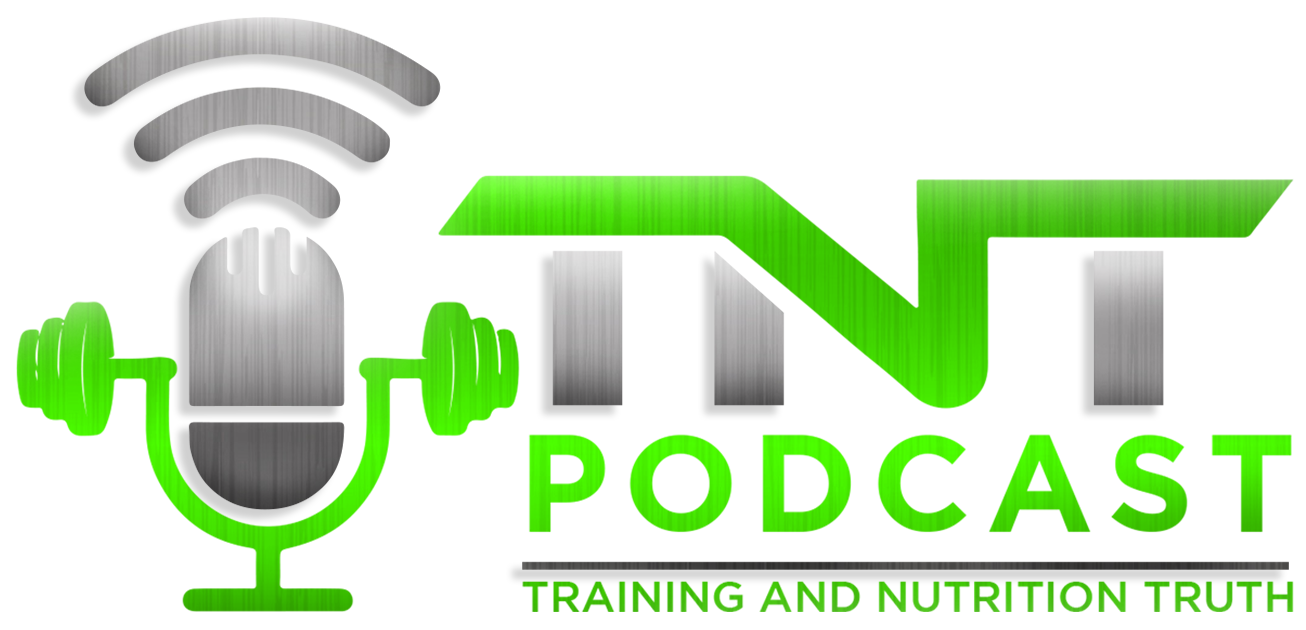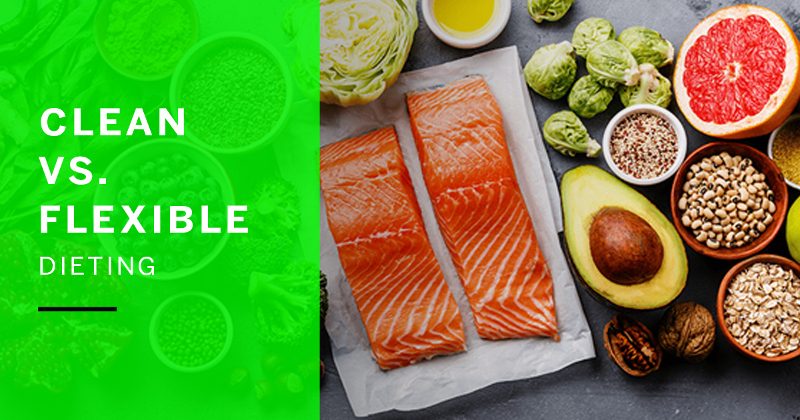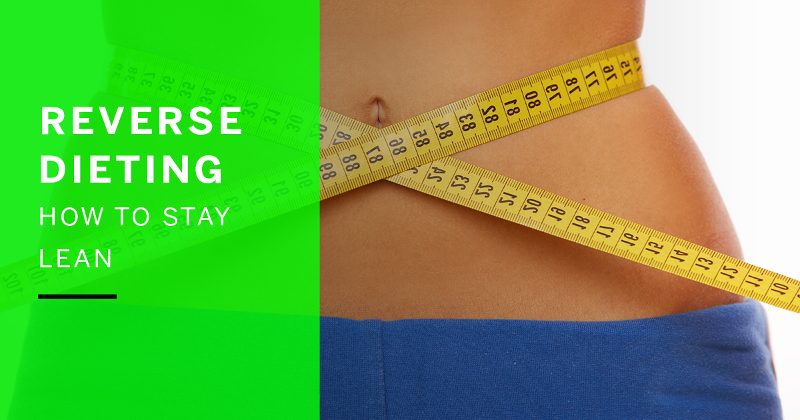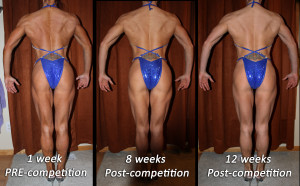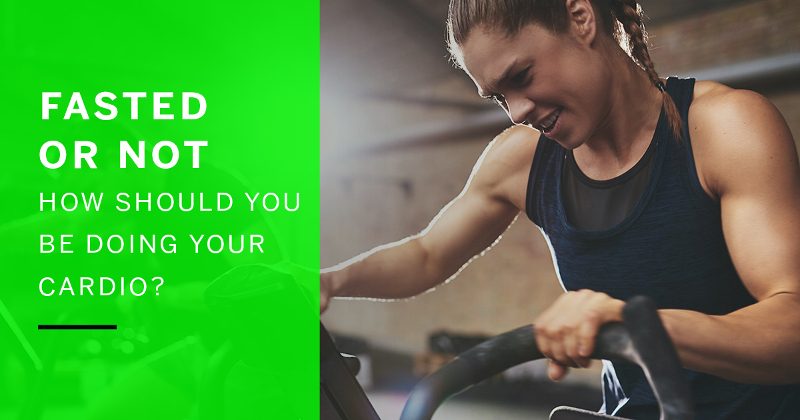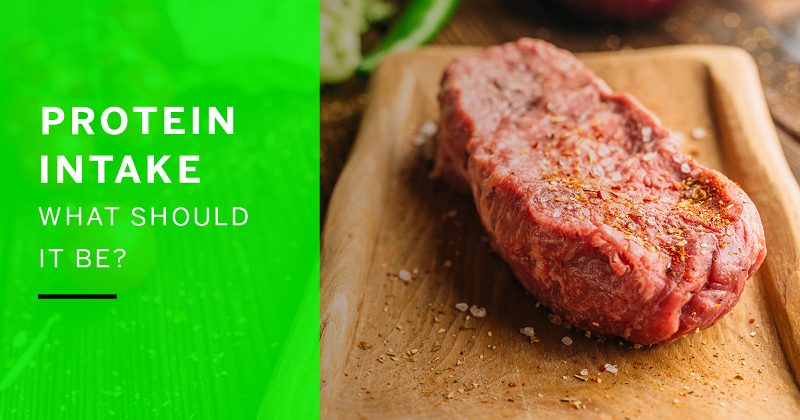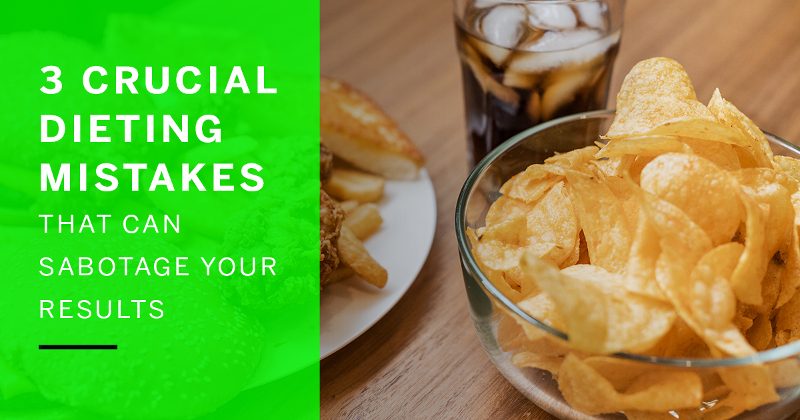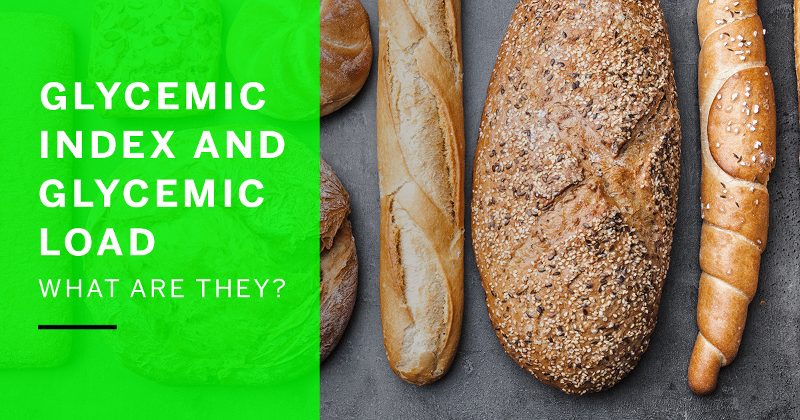Clean Vs. Flexible Dieting
Clean Vs. Flexible Dieting
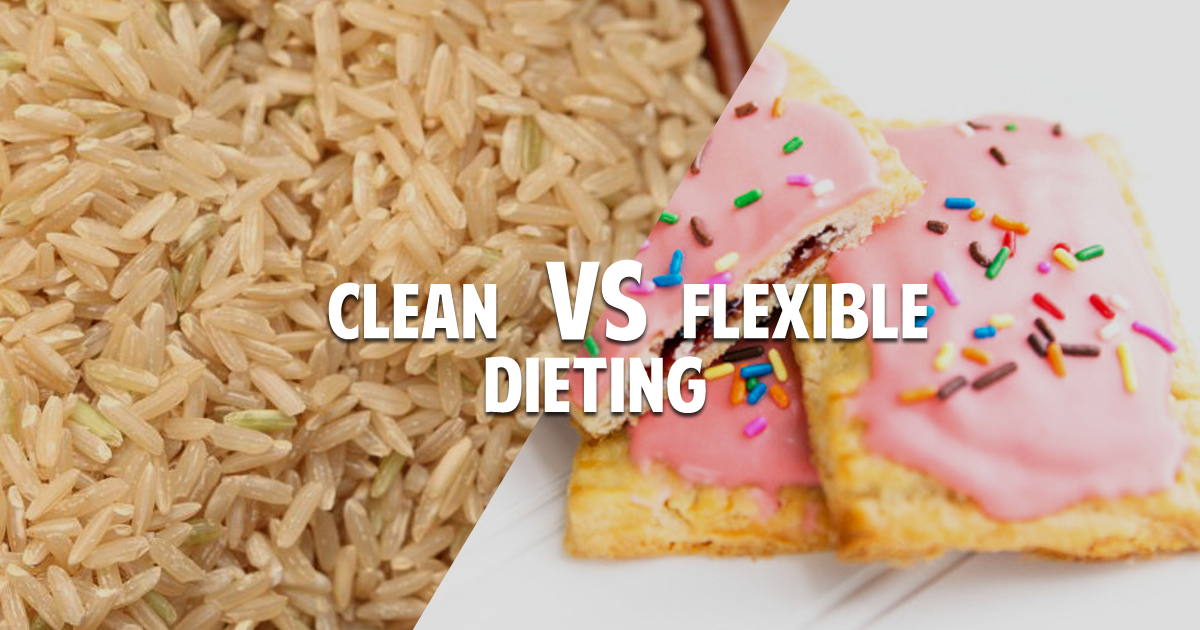
Over the last 5-6 years there has been a big debate on whether flexible dieting or clean eating is the best way to diet fat off. On one side you have what most of us have been taught and thought as gospel over the years- only eating “clean” foods will lead to achieving the fat loss you want. On the other side a system has emerged allowing us to use non-traditional dieting foods to get fat off allow the foods we crave to be eaten. At first most people looked at flexible dieters like they were crazy eating things like ice cream while dieting, but now over the years it’s been proven to be a very effective way to diet down. So what we know is- BOTH systems work. What I want to do here is educate you on both, give the positives and negatives, and give you the information you need to take it and apply it to yourself and your clients if you are a trainer/coach.
Clean Eating Defined
Since there is really no way to define clean eating we can just recognize it as only eating foods from the ground, or from animals. These are the traditional foods most people think of when it’s time to diet. Protein’s such as eggs, cottage cheese, chicken, fish, etc. Carbs such as oats, sweet potato, brown rice, etc. Fats such as olive oil, almonds, peanut butter, egg yolks, fish oil, etc etc. Vegetables such as broccoli, green beans, salad, etc. Some clean eaters will take it so far that they will only eat organic foods, nothing processed whatsoever.
In the bodybuilding community prior to 2010 I would say that 95% of people who dieted used clean foods only, we thought that’s all that would work. I would also say that most clean eaters would stick to a “meal plan” that used clean food but didnt count the protein/carbs/fats in the plan. Sure measurements are used such as eating 1 cup of brown rice and an 8 oz chicken breast but most dieters wouldnt count the macros or calories they just eat the food.
Clean Eating Positives
There are definitely positives to clean eating. Foods are usually pretty high in the micronutrients and vitamins that we need. Most clean foods also provide a decent amount of fiber in them, and will digest slower making them low glycemic carbs. Also, clean foods usually have more size/volume to them so you feel fuller eating something such as 50 carbs from a sweet potato versus 50 carbs from low fat ice cream. And finally, clean foods are much easier to buy in bulk and just prepare to eat instead of trying to fit in flexible dieting foods and doing the math to see how many cals to have.
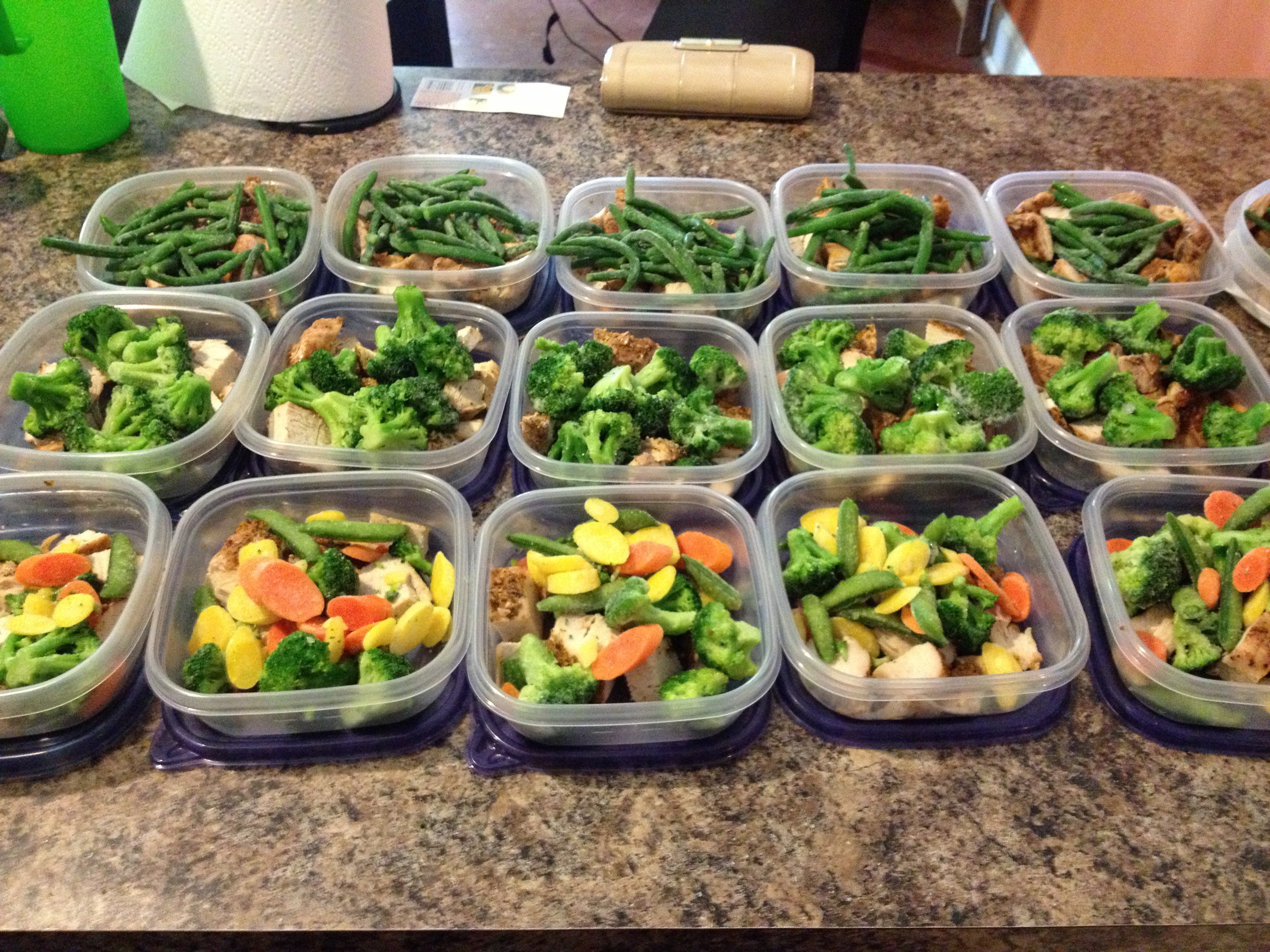
Clean Eating Negatives
There are a lot of negatives that come with clean eating, and some that impact people way more than they understand in the beginning. First, we didnt grow up eating “clean” so it’s something that’s not common to us and is extremely hard to do long term. It’s very common for people to be able to stick to it while dieting, but after the diets over….. LOOK OUT. Most reading this have experienced sticking to a clean diet for a period of time and then losing their minds afterward, unable to stay out of the cabinet at 2 a.m. Any kind of restriction of food choices will cause some sort of mental rebound, and cheating when the diet is over. And hell let’s just be honest, most people cheat on the diet when being so restrictive with food choices. Another negative is only sticking to one set of food choices and not letting the body eat different foods, usually causing some distress with digestion when “normal”food is eaten, or a cheat meal is taken. Finally, the mental component is so hard that clean eating usually leads to burnout and people to never stick to a diet because they just get tired of failing. Clean eating is not something most people can stick to 100% while dieting, let alone the rest of their lives.
Flexible Dieting Defined
Flexible dieting is simply counting your protein/carbs/fats that you take in daily and eating the foods you like to hit those macro’s. There’s really no such thing as a clean or dirty food, it’s just something that is turned into amino’s (protein), glucose (carbs), or lipids (fats). Common food choices are things like bacon, low fat ice cream, baked chips, bread, cereal, milk, fruit, and even clean foods can be eaten as long as the pro/carbs/fats are counted in them. The point of flexible dieting is to 1. count your macros and 2. use the foods you want to eat to hit macros.
Flexible Dieting Positives
There are a whole host of positives with flexible dieting. First, and probably the most important is the ability to adhere to a diet. Most people will be able to diet fat off easier by eating foods they want and crave, and it leads to less cheating. Another benefit is that after the diet is over, it’s easier to stick to this plan because it’s a lifestyle whereas clean eating isnt for most people. Counting macros/calories is also a positive because it’s much more accurate than trying to just eat a meal plan or trying to just eat clean without counting cals. And finally, another positive is that it’s easy to travel or be on the run and eat foods that are packaged or at a restaurant instead of trying to bring a big cooler full of chicken and rice for days. Just hit pro/carbs/fats and keep going.
Flexible Dieting Negatives
While flexible dieting sounds fun, there are some drawbacks and things to be aware of. First, most flexible dieting foods are low in fiber and processed, so make sure fiber intake is adequate while using this system. Another negative is that some people may not get the micronutrients and vitamins they need from processed foods, so taking a full multi-vitamin and making sure to eat plenty of vegetables is key. Also, people will abuse anything and take it to the extreme. Some people have made it a point to eat the most horrid shit food they can and still hit macros, giving it a bad distorted image. And finally, a lot of flexible dieting foods digest faster, or they dont have the volume that clean foods do so that feeling of being full or satisfied isnt there when someone eats either chicken and rice vs. a whey shake and cereal.
Above is a video of the PowerPoint presentation I give regularly on this topic
So Which System is Best?
Here’s what I recommend for my clients- use a middle of the road approach. I tell them to eat as “clean” and healthy as possible, but bake in some flexible foods that will help them stick to the diet and not cheat. The biggest key to any successful diet is ADHERENCE. I am very big on this, so I tell them make sure to eat foods that they like and can help them enjoy the diet. I have had zero problems over the last 5 years using a flexible dieting approach and getting my clients lean enough, and my clients love it. Most have thanked me because they used to have a hard time with clean eating and also rebounding afterward. And lets just be honest, clean eating DOES cause forms of disordered eating. Some of you know what I am talking about (ok a LOT of you know) because we have all been there.
I hope you enjoy the food you like and have fun with your diet, it shouldnt be miserable or cause any backlash after it’s over. This is the best way to make it a lifestyle when you are done.
– John Gorman, MA, CPT, is a well-respected diet coach and the owner of Team Gorman LLC. John is also the owner of PHAT Muscle Project apparel, a published author, public speaker, co-owner of The Physique Summit Conference, and proud member of the 1st Phorm Phamily as an Elite Trainer. His work centers on helping athletes achieve their maximum potential in various sports such as bodybuilding, powerlifting, crossfit, along with high school and college level athletics. You can follow him on Snapchat @teamgorman , Instagram @team_gorman , facebook.com/teamgorman or contact him via email john@team-gorman.net
